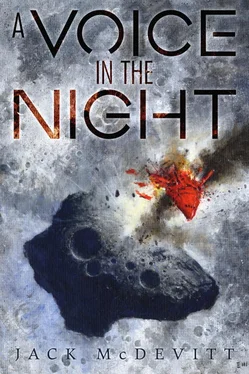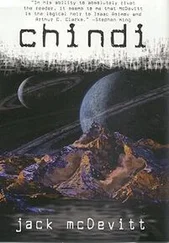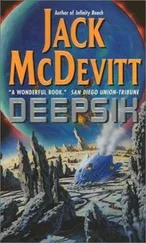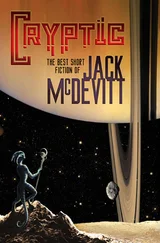I mention this up front because I attended a seminar this past summer during which I may have touched the infinite. And I know how that sounds. But I want to avoid your saying well, after all, this is Jake Cobblemere, he writes all those stories about time travelers and rubber dimensions, so what do you expect? If you want to believe I’ve lost it, that’s okay; but don’t conclude all this just bubbled up out of my workday habits. Because that isn’t what happened.
Not at all.
Last spring I got a call from Sam Wynn inviting me to participate as an advisor at the Baranov Seminar, which is conducted annually at the Skyhawk Conference Center in upstate New York. You might have heard of it. The participants refer to themselves as Baranovians. They’re science fiction enthusiasts who meet for a few days every summer to renew old acquaintances and do the SF equivalent of a mystery weekend. They bring in a writer and maybe an outside expert to put together a simulation for them. The previous summer, for example, they converted Skyhawk into Moonbase and staged a murder. One of the guests was the New York City medical examiner. (The murderer, by the way, turned out to be the computer, à la Hal.)
The seminars have been running since 1971, when Abraham Baranov personally launched them, discovered how engaging they were, and stayed with them until his death. It was, I need not tell you, a signal honor to be asked to step briefly into the great man’s shoes.
“This year they want to do a Martian dig,” Sam told me. He explained that the group decides each summer what sort of program they’ll do the following year. “We’ve got Marsbase up and running. We’ve been there for a while, taking soil samples and whatnot, and we discover some artifacts.”
“Artifacts?” I said. “What sort of artifacts?”
“That’s up to you, Jake.”
“But Mars is dead. Has been for a couple of billion years, except maybe for microbes. How could there be artifacts?”
“Your problem, Jake. Come up with something. And listen, we’re giving you a professional archeologist to work with.”
“Okay,” I said, warming to the idea. “Does the archeologist write science fiction?”
“She doesn’t like science fiction. But she’s a friend of mine, she’s available, and she offered to come no charge.”
“What am I supposed to do with an archeologist? “
“They want to do an actual dig. She knows how.”
“I thought this would be a simulation.”
“Oh, no. There’ll be a real dig site. We’ve set aside some ground. You’re going to bury the artifacts, and the team will dig them up and try to solve the mystery.”
“What mystery?”
“Invent one.”
The archeologist was Maureen Coverdale. She worked out of Penn, and I lived in Indianapolis, so we did all the planning on-line. She surprised me. I guess I’d expected that she would treat the whole thing more or less as an excuse to get a free vacation, but she took it all very seriously. She kept after me, pointing out that Martian artifacts could not be produced at the last minute, and that we had a clear obligation to make sure the Baranovians got their money’s worth.
She turned out to be twenty years younger than I’d expected, dark-eyed, trim, a woman who looked as if she’d be more at home among soft blue lights than among ruins. But I dreamed up a story line and we agreed on what we needed to do. She took charge of manufacturing the stuff we needed. She showed up two days before the program was to start, supervised the Skyhawk earthmover, buried everything, and was waiting (with Sam Wynn) to shake my hand when I arrived late, having underestimated the driving time on a series of winding roads.
We retired to The Hawk’s Nest and reviewed our plans over rum and Coke. Then we walked out to the dig site, which was located about a quarter mile from Harper Hall. (Harper would serve as the team’s mobile field station.) The site was about sixteen feet on a side, shielded by a canvass awning.
“Are the Baranovians here yet?” I asked.
“Some are,” said Sam. “Most of them will straggle in during the night.” He consulted a clipboard. “Altogether, we’ll have twenty-four.”
Skyhawk is located in deep forest on the shores of a glacial lake. Green-carpeted mountains rise on all sides. On that first night there was a brilliant full moon, the wind was loud in the spruce, and the woods smelled of mint and cold water. A half-dozen lights lined the far shore. Nothing could have been farther from Mars.
Warren Hatch was glad to get off his hands and knees, and give his place to Judy Conroy. “I never knew archeology was so mind-numbing,” he told Maureen. A dozen or so members of the team were working meticulously over the site, removing the crumbly Martian soil a half-inch at a time, brushing it off rocks, turning it over to others who strained it to be sure nothing was being overlooked. “Whatever happened to Indiana Jones?” he asked. “To buried temples? Secret doors? That sort of thing?”
Maureen smiled. “Real archeology would make a slow movie,” she said.
Warren looked out past the dig site, through the plasteel shell that shielded them from the near-vacuum. Low red hills rose in the north, and he could see a dune buggy moving across the horizon.
“Got something here.” Patti Kubik’s voice. She brushed the object and held it up. It was a knife. Long and slightly curved, it had a metal blade and handle, and was still in good condition.
“No telling how old it is,” said Cobblemere. “It could have been in the ground for centuries without showing any real deterioration.”
They noted where the knife had been found and placed it beside the two urns they’d recovered earlier.
“Here. Look at this.” Eddie Edwards, short, squat, barrel-shaped, bent close to the ground. He was on his knees, rear end stuck up, face red with effort, working with brush and fingers to clear a rectangular tablet about the size of a dinner plate. “It’s got a picture on it,” he said. That brought a crowd.
The tablet depicted a vaguely reptilian-looking creature with long teeth and crocodilian eyes. The stuff of bad science fiction films. For all that, it maintained an aspect that seemed almost pious. It wore a robe, and it seemed to have just dropped something that might have been a stone or a crumpled piece of paper. A jagged line resembling a lightning bolt was drawn through the dropped object. A string of exotic characters lined the top and right side of the tablet.
“This can’t be right,” said Jason Kelly, the team’s senior member in terms of age and service. Kelly was almost seventy, but he was a physical fitness freak and he could probably have run most of his associates into the ground. He claimed to be the world’s lone exobiologist. “It’s a hoax. Has to be.”
“Why?” asked Warren.
“If this is supposed to be a Martian, it’s all wrong. Martians couldn’t possibly look like this. These creatures would have evolved in a swampy environment.”
“Here’s another.” Murray Fineberg, this time. Murray was middle-aged, overweight, a man who looked as if he would have been more at home running a publishing business than kneeling in Martian silt. His tablet revealed the same sort of creature, this time bowing before a pyramid from which lines of light seemed to emanate.
“It just doesn’t figure,” said Jason. “We know surface conditions were never adequate to support anything more complicated than a bacterium.”
Читать дальше










